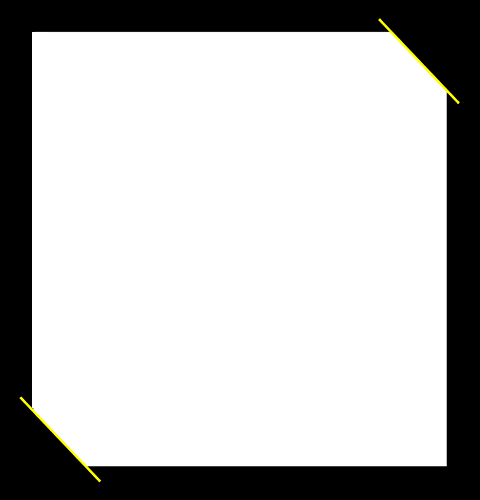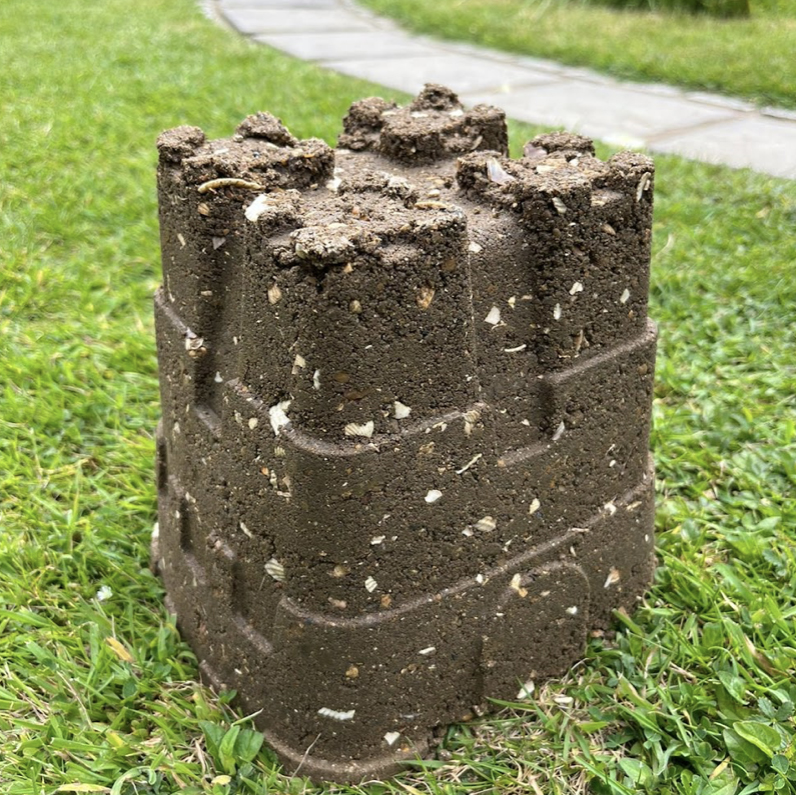SuperSeeded
This participatory art project led by artists Amber Martin-Smith and Cat Hart. It uses local materials from Hadleigh Farm Estate to create temporary land-based sculptures by adapting the technique of rammed earth – a sustainable building method and alternative to cement which produces 8% of worldwide carbon emissions.
Together with the artists, you will create a series of ‘sand castles’ that will hold their structure temporarily, but break down over time. These 10” x 10” sculptures will be made from local soil, clay, sand, manure/compost, and will be infused with the seeds of local plants that will germinate as the castles slowly break down.
These sand/soil castles highlight the site’s history of strategic defense, from the 13th century when Hadleigh Castle was built, to the use of the Hadleigh farm lands for an anti-aircraft battery during WW2. The incorporation of local clay, fertilizer from the farm, and sand speaks to the specificity of the Estuary environment, and the use of the clay-rich soil for farming and brickmaking during the Salvation Army Farm Colony heyday.
The impermanent nature of these sculptures references how temporary our human endeavours are as the castles crumble and return to the land from which they came, echoing the ruins of Hadleigh Castle. The incorporation of seeds from local, Estuary-based plants will allow the possibility for something new to grow from the ruins of these sculptures as nature reasserts itself.
Participants are invited to join the artists to build the castles and ‘plant’ them in groups at 3-4 sites of historical and ecological interest in the Park. Each castle will be home to a different plant’s seeds, chosen for their appropriateness to the site, connection to the current rewilding project, and which plants grow together in ecological communities in the wild.
During the placement of the castles, the artists will share local history, information about Estuary ecologies, and about the uses of the plants which will grow from the crumbled form of the sculptures.
Times and locations
Friday June 27, 9am, Meet at Leigh/Benfleet train station to walk to the wharf.
Come along to a low tide walk along the sea wall and build sculptures at the site of the old Salvation Army Jetty. You will watch the tide come in and see what remains of the sculptures as the water rises.
Saturday June 28, 10am - 3pm, Meet by the Hadleigh Farm Tearooms to walk to the planting site.
Join the artists to plant some seed sculptures in the South West side of the park, currently being rewilded for winter bird food and species-rich grassland.
Book here
About the artists
Amber Martin-Smith is a Southend-based environmental scientist, gardener, forager and wild cook. She explores ways for people to reconnect with nature, both in wild and urban green spaces. Guided by the seasons, uses her own deep-healing journey outdoors to understand how the natural world can ground us and impact our sense of wellbeing. Part of this work is through strengthening the community’s connection with local plants by teaching plant identification and folklore, often focusing on wild edible plants through guided walks and culinary experiences. She has recently been an artist in residence at Metal Southend and Studio 459 Tomar.
Originally from Southend, for the last 18 years Cat Hart has been living on the unceded and stolen lands of the xʷməθkʷəy̓əm (Musqueam), Skxwú7mesh (Squamish) and səlilw̓ ətaʔɬ (Tsleil-Waututh) nations in Canada. Cat uses local materials and ecologically accountable photographic and ceramic processes to explore local and personal histories. Cat’s short films have been shown in Vancouver and they were recently an artist in residence at Deer Lake in Burnaby, Canada, and at Metal Southend in the UK.
Cat Hart
Cat and Amber’s collaboration focuses on their shared interest in the complex ecologies of the Thames Estuary, their personal connections to Hadleigh Country Park, and the artistic, culinary, and relational experiences that can result from working on and with the land.
Image: Rammed earth sandcastle sculpture and Hadleigh castle as seen from sculpture site

 maybe later
maybe later



